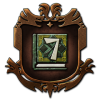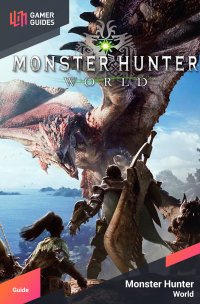| Quest Info |
|---|
| Objective: Slay Nergigante |
| Reward Money: 18000z |
| Time Limit: 50 min. |
| Conditions: HR 13 or higher |
| Failure Conditions: Time Expires / Faint 3 Times |
| Other Monsters: None |
After all that work, when you’re finally ready to challenge the Elder Dragon who feeds on Elder Dragons, accept the assignment A Wound and a Thirst, get a good meal, and bring plenty of healing items and stat buffs. You do not need traps or Tranq Bombs for this fight, as Elder Dragons cannot be captured, so plan accordingly. When you’re ready, travel to the Elder’s Recess and head to AREA 9, where Nergigante will find you.
| Elements | . |
|---|---|
| Fire | * |
| Water | * |
| Thunder | * * * |
| Ice | * |
| Dragon | * * |
| Ailments | . |
|---|---|
| Poison | * * |
| Sleep | * * |
| Paralysis | * * |
| Blast | * * |
| Stun | * * |
Hunt - Nergigante¶
Nergigante is no slouch in combat, rivaling the ferocity of the the most aggressive monsters, frequently attacking and leaping with little pause - somewhat impressive for a monster of its size. Nergigante can showcase this aggression in a variety of ways, including a quick, frontal claw attack or bite, a charge attack (leading with its horns, of course) and a head-butt, which again makes use of its prominent horns. These attacks are all fairly common, short-range, comparatively low-damage and easily avoided, if you just don’t stand in front of Nergigante and make too inviting a target of yourself.
Against foes that attempt to flank it or attack from the rear, Nergigante can perform a side-swipe with its claws (dealing significant damage to flanking foes), tuck-in, then violently unfurl its wings (it takes some time for this attack to launch, so if you see Nergigante folding up its wings, be prepared to dodge or block) and the good old tail smash, often performed two strokes at a time, as per the norm. Add into this a relatively long-range roar (not infrequently employed) and you’ve got a good idea of Nergigante’s more basic, close-range attacks.
Nergigante can also grind its wing and shoulder into the ground and perform a charge attack with this improvised spike-wall. In addition to its other two - relatively short-ranged charge attacks - Nergigante is capable of performing a leaping charge, covering a fair amount of ground quickly. When Nergigante just wants to make an impact, however, it’ll rear up on its hind legs and perform a rather inelegant, stumbling, short charge before smashing the ground with its fist, making for a significantly more powerful punch than normal.
As with most enemies, Nergigante can grow enraged as the battle wears on, and, somewhat novel for Elder Dragons, Nergigante can also become fatigued. Most Elder Dragons also have some sort of cumulative effect which makes them stronger throughout the fight, altering their behavior and attack patterns - generally becoming more aggressive as the fight goes on. Kirin is currently the only example you should be aware of from this game, which could charge itself up, after which it would become resistant to damage and more dangerous with its lightning attacks.
Nergigante, on the other hand, has rapidly growing spikes. Initially these will only be prominent on its back and will start out white, but will harden over time and eventually turn black. In addition it’ll grow these spikes on its wings, arms and tail. Defensively, these spikes will help deflect attacks, requiring you to maintain higher levels of sharpness to avoid having your blows deflected. Offensively, most of its moves will remain the same, although these attacks may be accompanied by spike discharges - especially with its headbutt attack, which now grows quite dangerous, indeed. When these spikes are white, you can break them off to retard their growth temporarily, serving to keep Nergigante calmer and less dangerous. Most likely, however, these changes in Elder Dragon behavior are something you’ll just have to endure as a normal part of fighting such a monster.
What you must watch out for with Nergigante when its spikes are fully grown and hardened are its variety of diving attacks, including a diving headbutt and massive, ground-catering punch. Its most dangerous attack, however, is an spinning dive that uses Nergigante’s bulk - and wing spikes - to deal massive damage. This can nearly kill a character with a full health bar and good defense in one hit, and you must evade it if at all possible by sprinting to the side. Fortunately, Nergigante will signal this attack ahead of time by rearing back on two legs and roaring. A well-timed Flash Pod may also interrupt this attack, but it’s a gamble if you’re the target of the attack.
Your fight will start in AREA 9, but Nergigante isn’t above moving to AREAS 8, 12 and 14, the latter of which being where Nergigante is likely to be found on future optional quests and investigations. In AREA 9 you can attempt to use your Slinger to destroy the crystal pillars while Nergigante is under one, which will deal hefty damage to the monster, but that’s about the extent of environmental aid you can expect. When severely wounded, Nergigante will retreat to its lair in AREA 15.
If you find it sleeping, you’d be well-advised to plant Barrel Bombs (Large Barrel Bombs or Mega Barrel Bombs, preferably) near it before waking it up with a bang. Not only is this a good way to break some parts of Nergigante - say, its horns - but the damage will be much appreciated. Use ranged weapons or Slinger ammo if possible, otherwise, just smack the bombs in melee. They’ll do far more damage to Nergigante than to you. This is a fine way to shorten the remaining fight, during which Nergigante will likely be enraged and especially determined to cart some hunters. Expect it to shortly dive bomb through the walls to the south or east - likely the first of many such attacks it performs in its desperate last moments.
Nergigante’s horns, head and front limbs are the most receptive to damage, albeit not equally. The horns are the most vulnerable target, while the head is somewhat less receptive to cut damage and ammo damage, and the front limbs will take less blunt damage and ammo damage. All are better targets than other alternatives, but from a safety standpoint, it’s easier to attack from the flanks or rear. Nergigante is weak to Thunder damage, and isn’t particularly vulnerable or resistant to any ailments.
| Carves | Frequency |
|---|---|
| Immortal Dragonscale | * * * * * |
| Nergigante Carapace | * * * * |
| Nergigante Talon | * * * |
| Nergigante Horn+ | * * |
| Nergigante Regrowth Plate | * * * |
| Nergigante Gem | * |
| Rewards | Frequency |
|---|---|
| Nergigante Carapace | * * * * |
| Immortal Dragonscale | * * * * |
| Nergigante Regrowth Plate | * * * |
| Nergigante Talon | * * * |
| Elder Dragon Bone | * * * |
| Elder Dragon Blood | * * |
Slay Nergigante, after which you, The Handler, and the Admiral will chat, and despite your success, The Handler suspects you’re not done dealing with Elder Dragons yet. Shortly thereafter you’ll return to Astera, where her suspicions will be confirmed. Seems Nergigante’s ravenous hunger drove it to invade the Elder’s Recess, agitating other Elder Dragons in the process. These monsters have now been spotted in familiar environs in the New World, and must be culled before they can wreck too much havoc. The Commander will delegate assignments, after which you’ll be tasked with talking to folks.



 Sign up
Sign up

No Comments